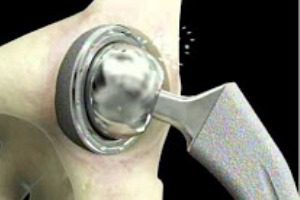
Defective DePuy ASR Hip Implant. An engineer at DePuy Orthopaedics said he worked for three years on a redesigned ASR metal-on-metal hip implant that corrected the failures of its predecessor but was disappointed and frustrated when the company halted the project unexpectedly. According to a report from Bloomberg News, James Anderson said he worked on […]

Defective DePuy ASR Hip Implant. An engineer at DePuy Orthopaedics said he worked for three years on a redesigned ASR metal-on-metal hip implant that corrected the failures of its predecessor but was disappointed and frustrated when the company halted the project unexpectedly.
According to a report from Bloomberg News, James Anderson said he worked on the so-called Project Alpha at DePuy, a division of Johnson & Johnson, that was an updated design to the company’s failing ASR metal-on-metal hip implant.
Anderson first started working at DePuy fresh out of college in 2005 and in 2008 was working exclusively on the ASR-2 device, the company’s proposed update to the troubled hip implant.
Anderson told jurors on Thursday that the updated design removed the groove in the cup component of the ASR hip implant and that by doing so, it reduced the risk posed by metal particles shedding into a recipient’s bloodstream. He was testifying via videotape from his native Scotland, where he is employed at DePuy, at the trial of Loren Kransky in Los Angeles Superior Court.
Kransky, 65, is a Montana man who represents the first victim of the failed ASR metal-on-metal hip implant to have his complaint reach a jury trial. The trial has reached two weeks and in that time, lawyers representing him have attempted to show that DePuy and Johnson & Johnson knowingly hid the defects of the ASR hip implant while continuing to market the device as safe and effective.
During the first week of the trial, jurors heard about Project Alpha, a top-secret mission to update the design of the ASR, which executives at the medical device company were aware was failing at an extraordinary rate.
People on the project were warned not to share information about it with anyone, including the company’s sales force, which instead continued to push the original ASR device.
More than 90,000 ASR metal-on-metal hip implants were sold worldwide during the device’s short time on the market, from 2003 (internationally) and 2005 (in the U.S.) until its recall in August 2010.
The groove in the cup helped surgeons identify where they should place the femoral neck component of the ASR hip implant. Toxic metallic ion levels by the ASR’s components rubbing together has been identified as one of the chief faults of the hip implant. As the pieces come together, they shed high amounts of metal into a patient and increase the risk of severe tissue and organ damage.
By 2008, Anderson told supervisors that he and others had vastly improved the design of the ASR but by September of that year, he was told that Project Alpha was stopped. Previous testimony in the trial suggests that financial concerns played a major role in stopping Project Alpha. Anderson said the decision frustrated him as he had spent the better part of six months touting the advancements that the updated design provided.
This is the first trial of what could be hundreds or thousands. Kransky’s lawsuit against DePuy is the first of more than 10,000 filed in courts across the U.S. to reach a jury. A bellwether trial from a Multidistrict Litigation involving more than 7,000 lawsuits against the company is expected to begin later this year.
The personal injury attorneys at Parker Waichman offer free, no-obligation case evaluations. For more information, fill out our online form or call 1-800-YOURLAWYER (1-800-968-7529).


